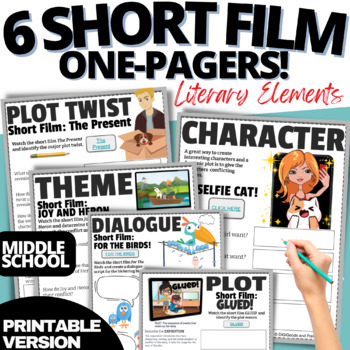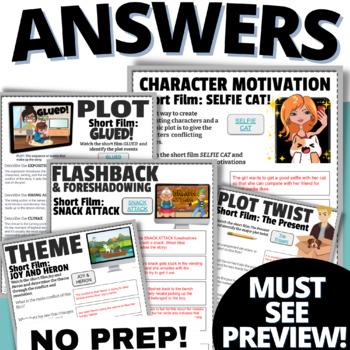PIXAR ANIMATED SHORT FILMS ONE PAGERS FOR LITERARY DEVICES ELEMENTS & TECHNIQUES
- PDF
- Google Apps™

What educators are saying
Description
Fun, quick, engaging one-pagers for teaching literary elements with animated short films! This pack includes: THEME, CONFLICT, DIALOGUE, FORESHADOWING & FLASHBACK, CHARACTER MOTIVATION, PLOT, AND PLOT TWIST!
*DIGITAL VERSION: CLICK HERE
*DIGITAL & PRINTABLE CLICK HERE
SHORT FILMS (links included)
⭐ PLOT: GLUED
⭐ PLOT TWIST: THE PRESENT
⭐ DIALOGUE: FOR THE BIRDS
⭐ CHARACTER MOTIVATION: SELFIE CAT
⭐ FORESHADOWING & FLASHBACK: SNACK ATTACK
⭐ THEME: JOY & HERON
FOLLOW DIGIGOODS FOR FREEBIE AND %50 OFF NEW PRODUCT ALERTS!
WHY TEACH WITH SHORT FILMS? Allowing students to learn about literary elements using short films alleviates some learning blocks that struggling readers and students with attention disorders experience. Separating knowledge of literature from reading comprehension helps students learn more effectively and enjoyably, which will ultimately improve reading skills. Students of all levels benefit from learning in manageable chunks.





